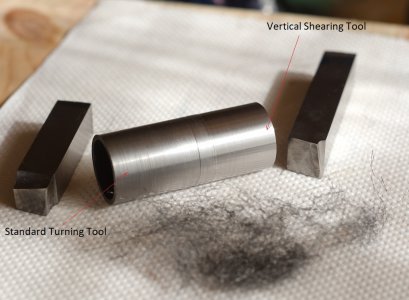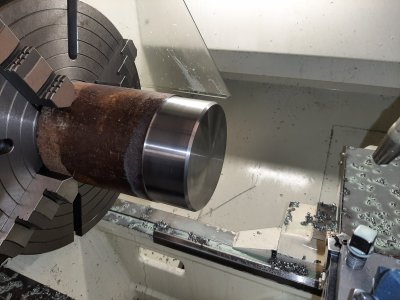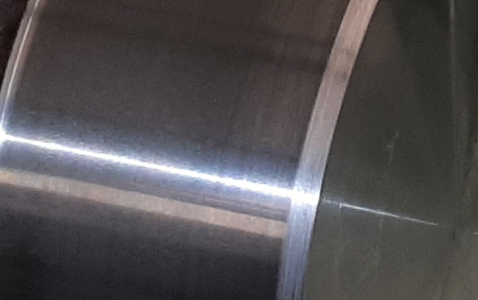Mild steel is famous for leaving a rough surface finish. Some people use emery cloth to improve the finish, but personally I'm scared of having my hands close to the chuck or a rotating workpiece. -So what to do?
A Vertical Shearing tool is the answer.
I have a couple of swedish HSS blanks laying about so I ground one standard tool and one shearing tool and when trying the shearing tool I was surprised.
The finish on mystery mild steel which usually gives a terrible result came out with almost a mirror finish.
The images from a camera do lie a little. In real life the finish on the right hand side of the round stock is in fact a mirror finish when looking at it with my eyes.
The chips aren't really chips,-they're angle hair as can be seen in the image.
I have a small bench grinder and it took a whole day to grind these tool. The swedish HSS blanks I used are extremely hard and tough, but it was well worth the effort since these tools will last for years.

A Vertical Shearing tool is the answer.
I have a couple of swedish HSS blanks laying about so I ground one standard tool and one shearing tool and when trying the shearing tool I was surprised.
The finish on mystery mild steel which usually gives a terrible result came out with almost a mirror finish.
The images from a camera do lie a little. In real life the finish on the right hand side of the round stock is in fact a mirror finish when looking at it with my eyes.
The chips aren't really chips,-they're angle hair as can be seen in the image.
I have a small bench grinder and it took a whole day to grind these tool. The swedish HSS blanks I used are extremely hard and tough, but it was well worth the effort since these tools will last for years.




